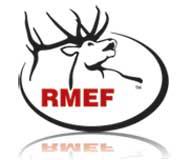
Rocky Mountain Elk Foundation will provide grants totaling more than $400,000 toward the research of Montana elk habitat and wolf management projects. The grants will also help with prescribed burning and thinning of noxious weeds that will clear the way for new grass to ensure proper nutrition for elk and other wildlife.
Grants totaling $451,042 provided by the Rocky Mountain will fund more than three dozen habitat enhancement, research, hunting heritage and other conservation outreach projects across the state of Montana in 2014.
The grants will positively affect 12,198 acres in Beaverhead, Broadwater, Deer Lodge, Flathead, Glacier, Jefferson, Lewis and Clark, Lincoln, Madison, Meagher, Missoula, Pondera, Powder River, Ravalli, Rosebud, Sanders, Silver Bow, Sweet Grass and Toole Counties. There are also two projects of statewide interest and another of Western Montana interest.
“A series of prescribed burning, thinning and noxious weed projects will clear the way for new grasses and forbs that provide proper nutrition for elk and other wildlife in some of Montana’s best elk habitat,” said David Allen, RMEF president and CEO. “These grants also help pay for four research projects that monitor elk populations and deal with habitat as well as provide funds for wolf management and a land acquisition that improves public access.”
RMEF’s mission is to ensure the future of elk, other wildlife, their habitat and our hunting heritage. Since 1985, RMEF and its partners completed 821 different conservation and hunting heritage outreach projects in Montana with a combined value of more than $140.4 million that opened or secured public access to 215,046 acres.
“Montana has more than 12,000 RMEF members spread across 20 different chapters. We thank them and our diligent and dedicated volunteers who raised the grant funding by hosting banquets, membership drives and other events,” added Allen.
Allen also thanked volunteers and members across the nation for their dedication to conservation and elk country.
RMEF grants will help fund the following 2014 projects in Montana, listed by county:
Beaverhead County—Enhance 400 acres of sagebrush grasslands in the Proposal Rock area on the Beaverhead-Deerlodge National Forest with jackpot burning to reduce slash concentrations following 2012 and 2013 conifer thinning treatments; and provide RMEF volunteer manpower to host a wounded veteran hunt for two veterans during the fall of 2014.
Broadwater County—Provide funding to treat spreading weeds beyond the normal buffer on roads within the Helena National Forest (also affects Lewis and Clark and Meagher Counties); provide funding to place radio collars on up to 30 cow elk in eight population segments in the Elkhorn Mountains for a study to evaluate the pre- and post-effects of the mountain pine beetle epidemic on elk distribution, nutrition and habitat (also affects Jefferson and Lewis and Clark Counties); and treat 330 acres of prime elk habitat with chainsaw thinning, prescribed fire and weed treatments to promote forage growth, enhance aspen and create openings in dense lodgepole pine stands on the Helena National Forest.
Deer Lodge County—Provided RMEF volunteer manpower to cut and stack 2.5 miles of old fencing on the Mount Haggin Wildlife Management Area to provide unhampered passage of elk, antelope and other wildlife across an important elk calving area and antelope summer range.
Flathead County—Treat weed infestations on 460 acres in the Spotted Bear Ranger District on the Flathead National Forest with emphasis on elk winter ranges along the South Fork of the Flathead River corridor in the Bob Marshall Wilderness Complex; and provide RMEF volunteer manpower to host a SAFE (Shooting Access for Everyone) Challenge shooting event at the Flathead Valley’s Montana Sportsman’s Expo that also features activities, exhibits and seminars about hunting, fishing, rafting, hiking, biking, horseback riding, skiing and more.
Glacier County—Provide funding for the Glacier County 4H Shooting Sports Program which teaches the fundamentals of archery and firearms shooting sports including safety, proper form and how to care for equipment (also affects Toole and Pondera Counties).
Lewis and Clark County—Apply prescribed burn treatment to 232 acres in the Hogum/Black Diamond watershed approximately seven miles east of Lincoln on the Helena National Forest to enhance elk winter range and forage openings in the Upper Blackfoot River Valley; thin 1,263 acres in the Poorman Creek watershed project area on the Helena National Forest to improve forage conditions for elk and other wildlife habitat in the Upper Blackfoot Valley; and improve forage on 300 acres on the Helena National Forest by applying weed treatments to retain elk on public land with yearlong habitat in the Big Belt Mountains. A portion of the treatment area (30%) is private land that will be conveyed to the Helena National Forest with funding assistance from RMEF.
Lincoln County—Implement the second of a three-phase cooperative weed management program to reduce spotted knapweed infestations and increase forage production on 1,000 acres of state, Plum Creek Timber Company (PCT) and Kootenai National Forest lands across the Pleasant Valley Fisher River Basin; chemically treat approximately 274 miles of road as well as 877 acres of adjacent field and side-hill sections of land that support wintering elk and deer away from roads on PCT, Stimson Lumber Company and state lands within the Fisher/Thompson Conservation Easement on the Kootenai National Forest; provide funding for pre- and post-burn weed treatments on 400 acres and seed 50 acres near the Koocanusa Reservoir in the Warland, Bristow and Cripple Creek drainages on the Kootenai National Forest to enhance key elk winter range; provide funding to place radio collars on six cow elk for a study identifying from where and how far elk migrate to winter range on the Tobacco Plains north of Eureka including across the Canadian border to give researchers information on elk biology and movements, travel corridors and to assist management of this trans-boundary herd; and apply weed treatments to 460 acres on the Kootenai National Forest to restore winter range in the Tobacco Valley near the Canadian border.
Madison County—Treat 50 acres of weed infestations scattered across the Beaverhead-Deerlodge National Forest and private lands that are an important migration route leading to the backcountry. This project will also remove approximately 1.25 miles of fence in poor condition located between a private ranch protected with a conservation easement and national forest lands; prescribe burn 317 acres to improve aspen stand health and reduce conifer encroachment in the Gravelly Mountains on the Beaverhead-Deerlodge National Forest; and apply 140 acres of noxious weed treatment in the Bear Creek area along the west flank of the Madison Range on the Beaverhead-Deerlodge National Forest to enhance habitat for elk, mule deer, pronghorn, white-tailed deer, grizzly and black bears.
Missoula County—Treat 160 acres of noxious weeds and apply some seeding on private land protected by a conservation easement to benefit elk and deer crucial winter range and improve upland bird habitat; provide funding for OutdoorsFest in Bonner—a free family event offering instruction about wildlife, how to shoot a bow and other skills; and provide RMEF volunteer manpower to host a SAFE Challenge shooting event at the Great Rockies Sport Show—a family-friendly hunting, fishing, boat and RV show.
Powder River County—Prescribe burn 250 acres on Bureau of Land Management (BLM) lands south of Broadus to return dense ponderosa pine stands to more historical conditions and increase understory productivity on yearlong elk habitat; and apply prescribed burning treatment within a 1,648-acre mosaic of ponderosa pine forest and grassland on the Custer National Forest approximately 16 miles south of Ashland to improve forage for elk, browse and forage for white-tailed and mule deer, pine seed production for wild turkey, and the prey base for goshawk (also affects Rosebud County).
Ravalli County—Provide funding to place radio collars on 20 bulls and 45 elk as part of a two-year study in the Sapphire Mountains to better understand changing elk distribution and assist public and private landholders in updating their management policies; and provide funding for the Youth Conservation & Education Expo at the Teller Wildlife Refuge—a free event giving youth the opportunity to learn basic outdoor skills, land stewardship, hunting ethics and wildlife conservation with activities including RMEF’s SAFE Challenge gun range, archery, fly casting, game calling, horse packing, big game scoring and other skills (also affects Missoula County).
Sanders County—Carry out prescribed burning of 441 acres of elk and deer winter range in the Dry and Cherry Creek drainages near Thompson Falls on the Lolo National Forest as part of a series of 20 different 200-acre unit burns to improve wildlife habitat.
Silver Bow County—Provide funding to herbicide spray 300 acres of BLM lands within the Big Hole River watershed to enhance elk and mule deer winter range as well as calving habitat; thin encroaching conifers from 590 acres of sagebrush habitat on BLM lands in the Cline Gulch and Harriet Lou Creek areas near the Wise River in the Big Hole Valley (also affects Beaverhead County); apply weed treatment on 145 acres in the Charcoal Gulch area of the Fleecer Wildlife Management Area to improve big game winter range as well as remove expanding Douglas-fir from 25 acres of aspen and 70 acres of sagebrush habitat and thin an additional 50 acres; provide funding for a study to determine the impact of livestock grazing on the nutritional value of winter range within the Mount Haggin Wildlife Management Area; and thin 320 acres to enhance sagebrush communities that provide habitat for elk and other wildlife in the Dickie Hills area near Wise River on BLM lands.
Sweet Grass County—Thin and burn 100 acres of BLM lands on the northern fringes of the Absaroka/Beartooth Mountains and parallel to the Boulder River to stimulate aspen and hardwood shrub productivity to encourage elk to forage on public land.
Statewide—Provide funding for the Montana Association of Land Trusts and its efforts to promote and support excellence in private voluntary land conservation across Montana through leadership, collaboration, education and outreach; and provide funding from the Torstenson Family Endowment (TFE) for 2,322 orange hunter safety vests for graduates of the Montana Fish, Wildlife and Parks Hunter Education Program.
Western Montana—Provided $50,000 in grant funding to assist wolf management in Montana including $25,000 awarded to Montana Fish, Wildlife and Parks for additional collaring of wolves to expand the science related to wolf pack locations, size and home ranges, and $25,000 awarded to USDA Wildlife Services to resolve wolf conflicts with livestock depredation
Conservation projects are selected for grants using science-based criteria and a committee of RMEF volunteers and staff along with representatives from partnering agencies and universities. RMEF volunteers and staff select hunting heritage projects to be funded.
Partners for 2014 projects in Montana include the Beaverhead-Deerlodge, Custer, Flathead, Helena, Kootenai and Lolo National Forests, Bureau of Land Management, Montana Fish, Wildlife and Parks, and other federal, state and county agencies, organizations, businesses, foundations and private landowners.
TFE funding is only used to further RMEF’s core mission programs of permanent land protection, habitat stewardship, elk restoration and hunting heritage.
About the Rocky Mountain Elk Foundation:
Founded over 30 years ago, fueled by hunters and a membership of more than 200,000 strong, RMEF has conserved more than 6.5 million acres for elk and other wildlife. RMEF also works to open and improve public access, fund and advocate for science-based resource management, and ensure the future of America’s hunting heritage. Discover why “Hunting Is Conservation” at www.rmef.org or 800-CALL ELK.


